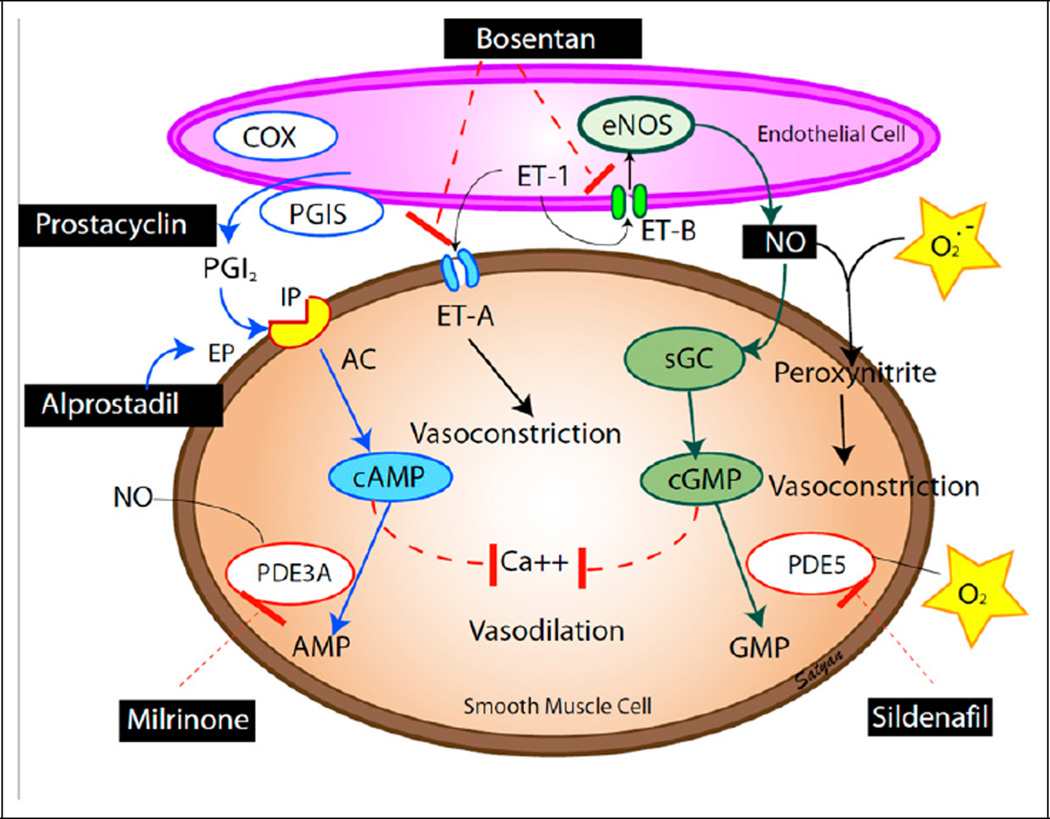Figure 1.
Endothelium-derived mediators: the vasodilators prostacyclin (PGI2) and nitric oxide (NO) and the vasoconstrictor endothelin (ET-1). Cyclooxygenase (COX) and prostacyclin synthase (PGIS) are involved in the production of prostacyclin. Prostacyclin acts on its receptor (IP) in the smooth muscle cell and stimulates adenylate cyclase (AC) to produce cyclic adenosine monophosphate (cAMP). cAMP is broken down by phosphodiesterase 3A (PDE3A). Milrinone inhibits PDE3A and increases cAMP levels in arterial smooth muscle cells and cardiac myocytes. Endothelin acts on ET-A receptors causing vasoconstriction. A second endothelin receptor (ET-B) on the endothelial cell stimulates NO release and vasodilation. Endothelial nitric oxide synthase (eNOS) produces NO, which stimulates soluble guanylate cyclase (sGC) enzyme to produce cyclic guanosine monophosphate (cGMP). cGMP is broken down by PDE5 enzyme. Sildenafil inhibits PDE5 and increases cGMP levels in pulmonary arterial smooth muscle cells. cAMP and cGMP reduce cytosolic ionic calcium concentrations and induce smooth muscle cell relaxation and pulmonary vasodilation. NO is a free radical and can avidly combine with superoxide anions to form the toxic vasoconstrictor peroxynitrite. Medications used in PPHN are shown in black boxes. Modified from Sharma et al. (6) Copyright Satyan Lakshminrusimha.

